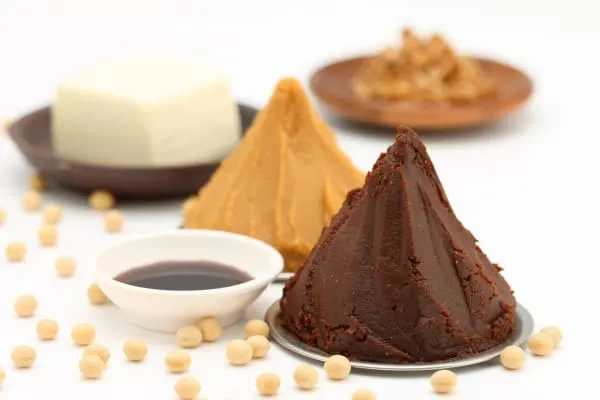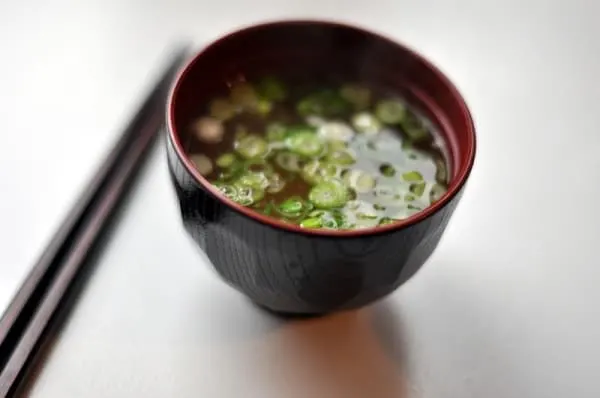You decided to venture into Japanese cuisine and try out one of its staples, the miso soup. So, naturally, you’ve bought a jar of miso paste, along with a bunch of other ingredients like tofu or seaweed.
And after cooking the soup a few times, you start to think about the shelf life of the paste. You only use a few teaspoons at a time, and it’s not like you make that soup daily. So you expect that it might take you even a few months until you finish that container. Can miso paste go bad?

Or maybe you’ve bought a jar of this soybean paste, stored it away in the pantry and completely forgot about it. I know I do this way often than I’d like to admit. I buy food items with the best of intentions, store them away, and forget about them a few minutes later, only to “find” them in a few weeks or months.
So you’ve found that jar, and there’s no expiration date on the label. You don’t quite remember when you’ve bought it, so you’re unsure what to do with it. Should you just toss it out?
In this article, we cover these and similar questions related to miso. If you have any doubts about going bad, shelf life, or storage of the soybean paste, read on. And since going bad seems to be the topic most people are interested in, let’s start with that.

Can Miso Paste Go Bad? How To Tell If Miso Is Bad?
Miso paste is made of fermented soybeans with salt and other seasonings ([WIKI]). First off, the soybean paste isn’t a perishable product ([SRM]), which pretty much means that it’s not really prone to go bad if you store it well.
So if you have an unopened jar that’s stored for months or even years, the paste will probably be not only safe to eat but flavorful as well. Once you open the container, the taste of the condiment changes gradually, but it should still be edible for many months or even years. In that matter, it’s quite similar to Tabasco sauce.
Having said that, miso can spoil. The longer you store it and the often you use it, the higher the chance of microbial contamination. And while fermented soybeans aren’t a great environment for growth for most bacteria, some may prevail and start multiplying. So if there’s mold on the surface or the smell has changed noticeably, throw it out ([MT][SRM]).

An important thing to remember here is that miso turns darker over time, especially if it sits in a warm environment. That change of color is natural and doesn’t mean the miso has gone off or anything ([HM]). Also, miso varies in color and flavor between batches ([MT]), so even if you buy it from the same manufacturer, it won’t always taste and look the same.
So you know that miso lasts quite a long time and doesn’t spoil easily. But as I already mentioned, the flavor changes over time, so how long does the paste keep for?

How Long Does Miso Paste Last?
Talking about the shelf life of the soybean paste is pretty tricky. Some containers come with a best-by date, but that date is there in most cases because the law requires it or for people to trust the product more (we trust foods with dates more than ones without). Hence, generally speaking, that date isn’t that useful to us.
South River Miso stored their product for 20 years ([SRM]), and it was still okay to eat after that period. And there’s no reason why it should work differently for other brands. Because of that, you can assume that an unopened jar can easily last a few years.

Once you open the paste, the product gradually changes in flavor. In most cases, it becomes less sweet to taste ([SRM]), but the taste changes over time in other ways too. And some people enjoy those changes, while others not so much.
If you want the most consistent taste, try to finish the jar within 3 months ([MT]), but the soybean paste should stay fairly even in taste for up to a year ([HM]). In short, the longer you keep it, the more pronounced changes in taste will become.
So if you wanted to know how long does miso paste last after opening, there isn’t one correct answer. I can just give you a ballpark of 3 up to even 12 months for a pretty consistent taste. And if you don’t mind the taste change, probably a lot longer.
Knowing that, it’s time to talk about storage, as even this aspect can get a bit confusing.

How To Store Miso Paste?
When it comes to storage of miso paste, things aren’t as simple as one would like them to be. Miso, like sauerkraut, is a fermented food and is basically a living thing ([HM]). Unless it’s been pasteurized. And because of that, some brands recommend keeping the unopened paste in the fridge ([HM]), while others don’t ([MT]).
So the best way forward here is to take a look at the label and see if the manufacturer wants you to refrigerate it at all times or not. Alternatively, take note of how the product was kept in the supermarket. If it was in the refrigerated section, your best bet is to chill it in the fridge too. If you won’t, it won’t go bad, but the taste might change sooner than you’d like.
When it comes to an opened container, you should keep it in the fridge ([WIKI]). While it might not be necessary to refrigerate it ([SRM]), doing so definitely gives you a higher chance of keeping the paste around for longer. The taste stays more even, and the cold temperatures are less inviting for any bacteria.
When it comes to other storage-related recommendations, remember to keep the container closed when not in use. And make sure you always use clean spoons when scooping the paste.
I know it’s easier to use whatever utensil you have on hand when you need to add the miso to the miso soup or ramen in a hurry, but it’s important to do the right thing here. Your soybean paste will thank you for that by keeping well for a long time and not going bad.

In a Nutshell
- miso paste lasts years unopened; after opening its flavor changes slowly, but it still stays safe for months or even years
- the soybean paste turning dark is a natural reaction and doesn’t mean the food has gone bad
- follow storage recommendations found on the label; if there aren’t any refrigerate at all times, or at the very least keep in the fridge after opening